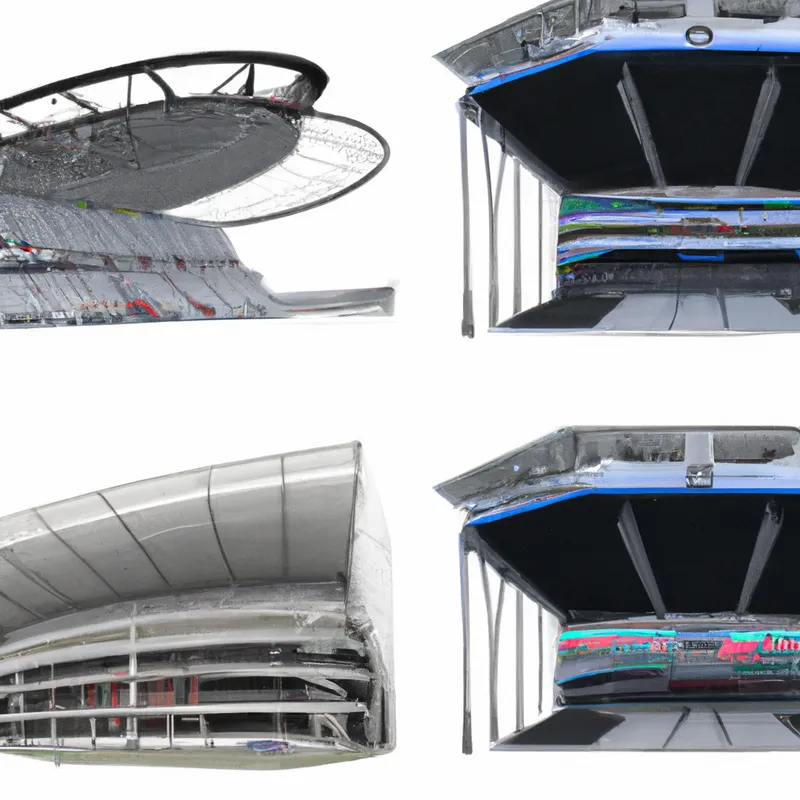Explore Innovative Designs in Football Stadiums
The Evolution of Football Stadium Architecture
Football stadiums have transformed significantly over the years. They evolved from simple structures to advanced designs that reflect societal changes. Today, stadiums serve as cultural landmarks, enhancing community and fan experiences. Let’s explore the development of football stadium architecture and its impact on fans and players.
Historical Context
Football stadiums originated in the late 19th century. Early stadiums featured basic wooden structures and limited amenities. The Crystal Palace, which opened in 1868 in London, marked the first modern stadium. It had a more permanent structure but lacked contemporary conveniences.
As football gained popularity, fans demanded larger venues. The early 20th century saw iconic stadiums like Camp Nou and Wembley Stadium emerge. These designs incorporated elaborate aesthetics and improved facilities, paving the way for modern football architecture.
The Modern Era
The late 20th century brought a significant shift in stadium architecture. Clubs invested heavily in new stadiums to enhance fan experiences and boost revenue. All-seater stadiums became popular, offering better sightlines and greater comfort. This shift also addressed safety concerns after disasters in overcrowded venues.
Technology advancements transformed stadium designs. Engineers used computer-aided design (CAD) to create complex, visually stunning structures. Stadiums evolved into architectural landmarks that reflected the identity of their clubs.
Iconic Designs
Stadiums like Allianz Arena and Emirates Stadium showcase modern architectural trends. Allianz Arena features a unique inflatable façade that glows in various colors, capturing Bayern Munich’s essence. Emirates Stadium combines sleek modernity with traditional elements, creating a stylish and welcoming atmosphere.
These architectural innovations prioritize sustainability. Many new designs incorporate green technology, including solar panels and energy-efficient materials. This focus reflects society’s commitment to sustainable practices and awareness of climate change.
Fan Experience
Modern stadiums enhance the fan experience significantly. Designers emphasize comfort, accessibility, and social interaction. Larger concourses, improved seating, and better sightlines create enjoyable atmospheres for fans.
Beyond seating, many stadiums feature fan zones, restaurants, and interactive spaces. These areas encourage fans to arrive early and stay late, fostering social connections.
Conclusion
Football stadium architecture has evolved dramatically, enhancing fan experiences and reflecting societal values. Today’s stadiums prioritize comfort, sustainability, and community engagement.
Below are related products based on this post:
FAQ
How have football stadiums changed over the years?
Football stadiums have transformed from basic wooden structures in the late 19th century to advanced designs that reflect modern societal values. The evolution includes the incorporation of elaborate aesthetics, improved facilities, and a focus on fan experiences and safety.
What are some examples of iconic modern stadium designs?
Iconic modern stadium designs include Allianz Arena, known for its unique inflatable façade that changes colors, and Emirates Stadium, which blends sleek modernity with traditional elements. Both of these stadiums reflect the identity of their clubs while prioritizing sustainability and fan engagement.
How do modern stadiums enhance the fan experience?
Modern stadiums significantly enhance the fan experience by emphasizing comfort, accessibility, and social interaction. Features such as larger concourses, improved seating, and interactive fan zones encourage fans to engage with each other and enjoy the event beyond just the game itself.















Post Comment